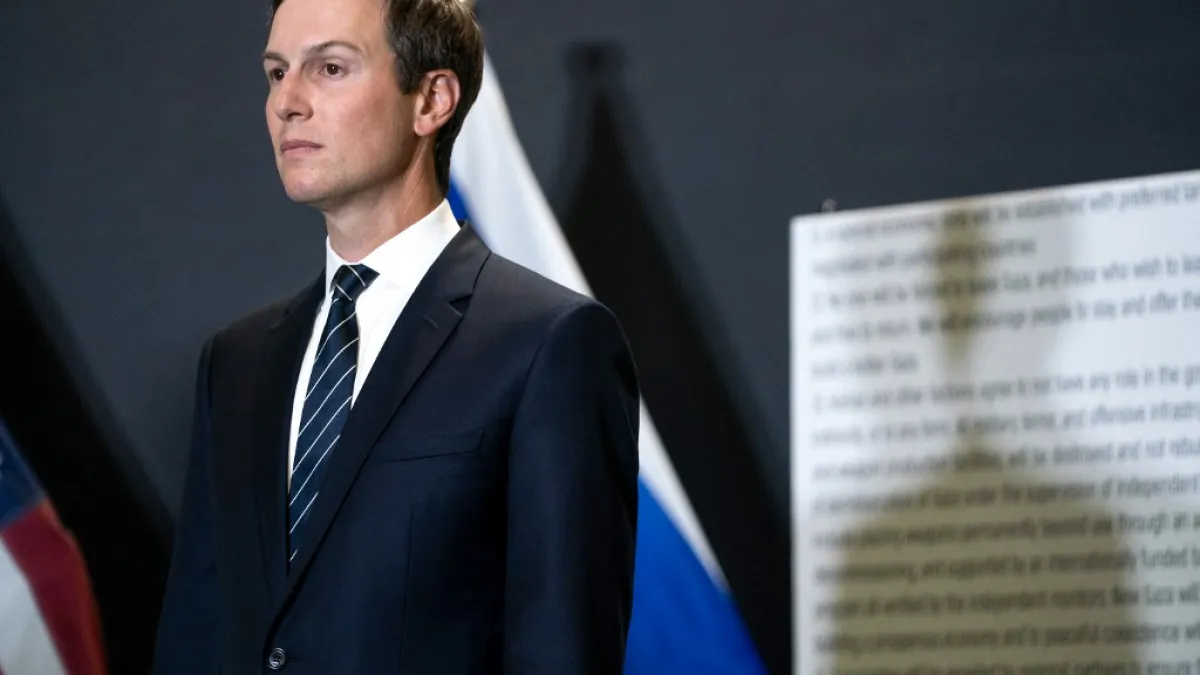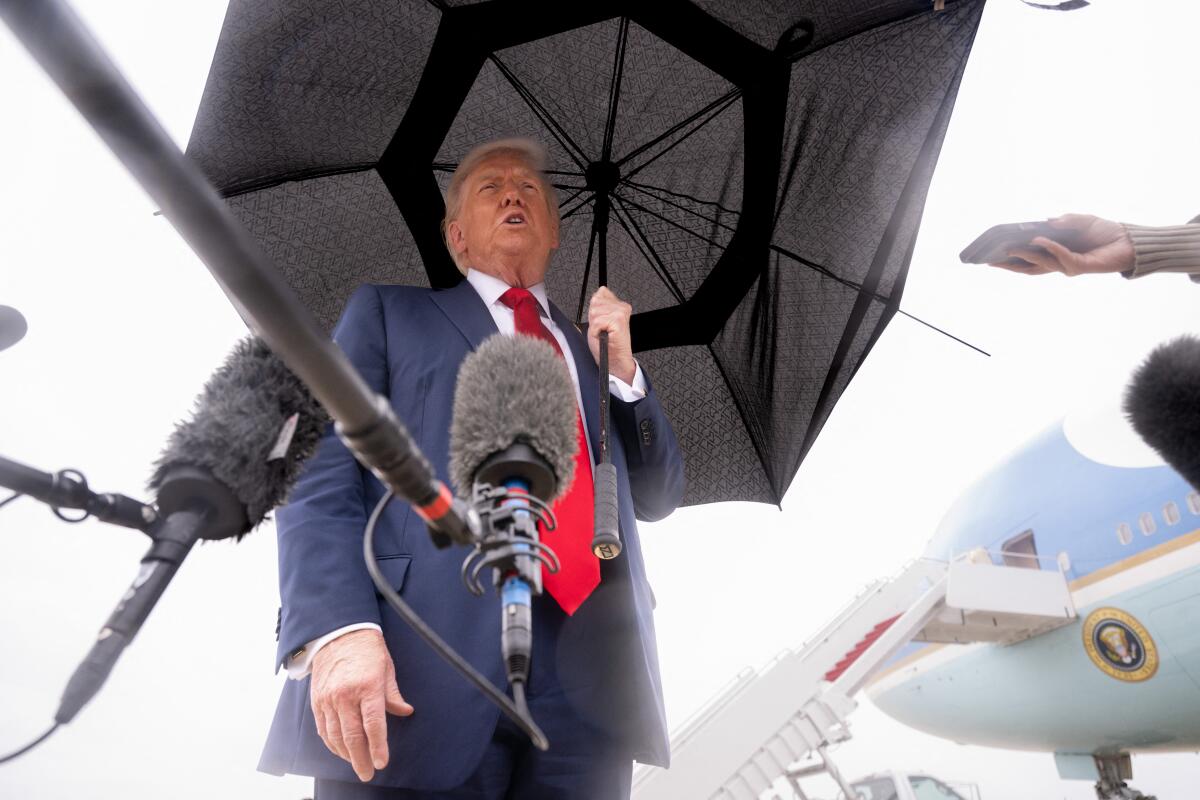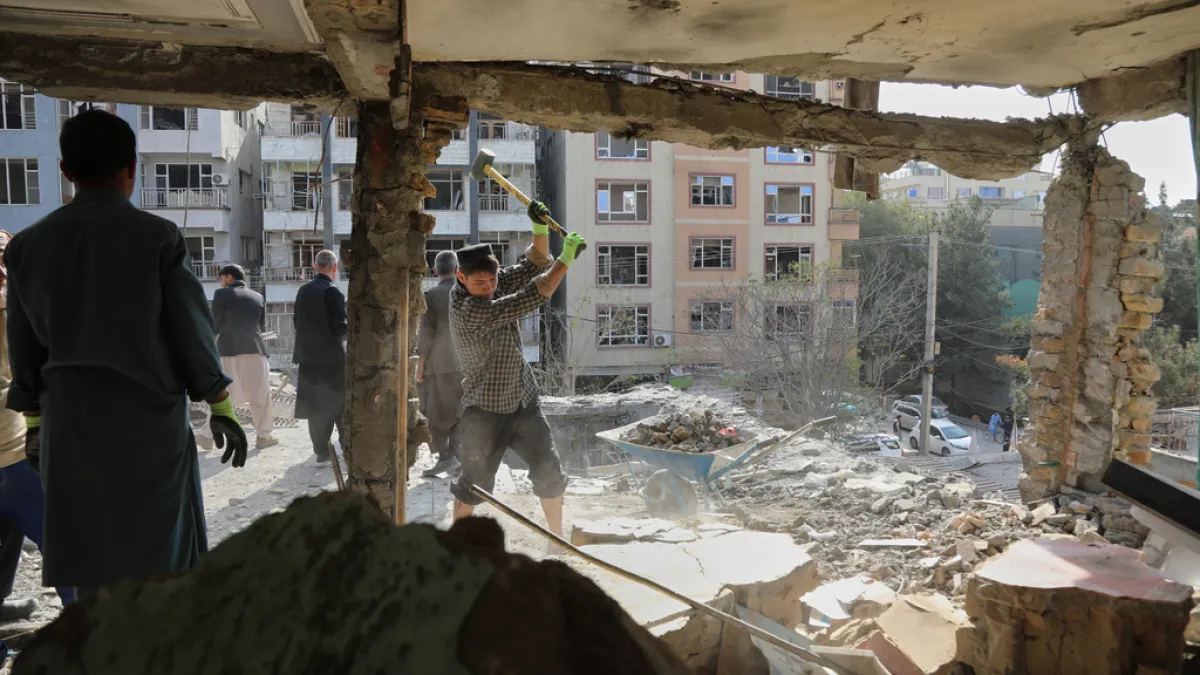Samsung, SK, Hanwha advance on Seoul bourse in third quarter

During the July-to-September period, the market capitalization of Samsung Electronics surged by more than $100 billion, maintaining its position as South Korea’s most valuable company .Photo courtesy of Samsung Electronics
SEOUL, Oct. 17 (UPI) — Samsung Electronics and SK hynix emerged as the biggest winners on the Seoul bourse during the third quarter, thanks to a strong semiconductor market, according to Korean consultancy CXO Institute on Friday. The two firms are the world’s top two memory chipmakers.
During the July-to-September period, the market capitalization of Samsung Electronics surged by more than $100 billion, maintaining its position as South Korea’s most valuable company. SK hynix followed with an increase of $28.5 billion.
Riding on the mounting global demand for weapons, Korea’s leading defense company, Hanwha Aerospace, ranked third with a $12 billion gain, followed by battery maker LG Energy Solution with $8.3 billion and shipbuilder Hanwha Ocean with $6.7 billion.
“During the third quarter, the South Korean stock market was bullish. In particular, sectors such as semiconductors, shipbuilding, rechargeable batteries and biopharmaceuticals did well,” CXO Institute chief Oh Il-sun told UPI.
“The biggest winners were Samsung Electronics and SK hynix. As the memory chip market remains hot, the two corporations are expected to cruise well during the remainder of this year, too,” he added.
Indeed, Samsung Electronics and SK hynix saw their share price further rise by 16.7% and 30.2% this month, respectively.
As a result, Samsung Electronics Chairman Lee Jae-yong’s stock holdings topped $14 billion this month for the first time to solidify his status as the country’s wealthiest businessman.
He has shares in seven Samsung subsidiaries, including Samsung Electronics, Samsung C&T, Samsung SDS and Samsung Life Insurance.
Sogang University economics professor Kim Young-ick cautioned that the market may face a correction phase in the short term.
“In consideration of nominal gross domestic products, currency circulation and export data, I think that the stock market, led by Samsung Electronics, may enter a period of adjustment in the fourth quarter,” Kim said in a phone interview.
“As Samsung Electronics and SK hynix are projected to post strong results next year, however, the upward trend is likely to continue in the medium term,” he said.
Another standout performer was Hanwha Group, as two of its affiliates made the top-five list. The combined market capitalization of the conglomerate’s listed units more than tripled this year from $28.8 billion to $89.6 billion as of the end of last month.
As the figure nears $100 billion mark, Hanwha Chairman Kim Seung-youn encouraged its units to become global leaders in their respective fields.
“With the sense of responsibility that comes from being a national representative company, we must take the lead in every field,” Kim said his anniversary message to employees earlier this month.
“We are carrying out large-scale projects in various parts of the world, including North America, Europe, and the Middle East, in segments such as defense, shipbuilding and energy,” he said.
Biggest losers: Doosan Enerbility, Kakao units
In contrast, South Korea’s top heavy industry company, Doosan Enerbility, was the biggest loser, as its market capitalization fell by $2.6 billion during the third quarter, chased by online game publisher Krafton, down $2.4 billion.
Kakao Pay and Kakao Bank also languished by losing $2.2 billion and $2.1 billion, respectively, while the country’s largest contractor, Hyundai E&C, rounded out the bottom five with a $1.9 billion drop.
“In the third quarter, many companies in the construction, telecom, game, entertainment and retail sectors struggled. Oh said. “Of note is that two Kakao subsidiaries were among the underperformers.”
Once hailed as a next-generation online platform, Kakao aggressively expanded into multiple industries, but has experienced growing challenges in recent years.
Its founder Kim Beom-su, also known as Brian Kim, faces legal risks as the prosecution sought a 15-year prison term for him in late August.
Kim has been accused of being involved in the stock price manipulation of K-pop management agency SM Entertainment in 2023 to block a takeover attempt by rival company HYBE.
Kim has denied the allegations. He resigned from Kakao’s top decision-making council early this year, but remains as its largest shareholder.
Autonomous Launchers Make Impact As Army Requirements Grow
The Association of the U.S. Army’s (AUSA) annual symposium has seen some notable appearances by autonomous launchers, underscoring the service’s growing interest in this class of system. On show at the event were a new Family of Multi-Mission Autonomous Vehicles (FMAV) from Oshkosh Defense, as well as Raytheon’s DeepFires. Between them, these platforms can be armed with a wide variety of offensive and defensive weapons, including Tomahawk cruise missiles and Patriot surface-to-air missiles.

Extreme Multi-Mission Autonomous Vehicle (X-MAV)
The FMAV series from Oshkosh Defense comprises three different truck chassis that can carry a wide variety of weapons. The three vehicles are described as being “production-ready” by the manufacturer and comprise the following:
The largest of the FMAV series, the purpose-built X-MAV is able to support long-range munitions, including a podded launcher with four Tomahawk missiles. The 10×10 wheeled chassis offers off-road mobility, as well as integrated onboard power. Oshkosh is aiming the X-MAV at the U.S. Army’s Common Autonomous Multi-Domain Launcher Heavy (CAML-H) program.

In August, the Army revealed more details of CAML-H, which aims to integrate a launcher onto a 15-ton class chassis that will fire either Tomahawk missiles or the Patriot Advanced Capability 3 Missile Segment Enhancement (PAC-3 MSE) interceptor.
It is also worth noting here that the Army is already fielding the Typhon missile system, which includes tractor-trailer launchers capable of firing Tomahawks and SM-6s. Meanwhile, however, the Army has begun looking at smaller launchers that are easier to deploy as companions to Typhon, something we have reported on in the past.
Medium Multi-Mission Autonomous Vehicle (M-MAV)
The medium entrant in the family is based on the existing 6×6 Oshkosh FMTV A2. The M-MAV can be operated as an optionally crewed or fully autonomous launcher, equipped with the Multiple Launch Rocket System (MLRS) family of munitions. These munitions include the Guided Multiple Launch Rocket System (GMLRS), Precision Strike Missile (PrSM), Army Tactical Missile System (ATACMS), as well as future weapons like the Joint Reduced Range Rocket (JR3).

“M-MAV delivers advanced navigation, remote operation, and automated resupply capabilities to increase survivability, reduce crew burden, and enable dispersed, resilient fires formations,” Oshkosh said in its press release.
Light Multi-Mission Autonomous Vehicle (L-MAV)
The L-MAV is derived from the U.S. Marine Corps ROGUE-Fires and is a 4×4 autonomous carrier. It uses a modular design, so it can be rapidly configured for missions. These include counter-uncrewed aerial systems (C-UAS), electronic warfare, or resupply, for example. Examples of payloads shown at AUSA were the AeroVironment Switchblade 600 loitering munition and the Titan C-UAS.

“The Army has been clear on the need for autonomous, payload-agnostic platforms that are ready now,” said Pat Williams, chief programs officer at Oshkosh Defense, as he outlined the FMAV series. “The Oshkosh Family of Multi-Mission Autonomous Vehicles is engineered on proven tactical vehicles, with scalable autonomy and payload versatility to deliver what the Army needs today with the flexibility to adapt as the battlefield evolves.”
Raytheon DeepFires
Meanwhile, Raytheon revealed more details of its DeepFires autonomous launcher, which uses the Oshkosh FMTV A2 — the same platform employed by the middle-tier M-MAV. Raytheon has already been using the FMTV A2 platform for its DeepStrike autonomous launcher, which you can read more about here.

As for DeepFires, this has been designed for modularity, able to pivot very quickly from offensive or defensive fires. The vehicle is also designed for optionally crewed or fully autonomous operations and has already been tested.
Weapons payloads for DeepFires range from the AIM-9X Sidewinder for air defense all the way up to the Tomahawk. Raytheon has been tight-lipped about exactly how many rounds of each type of missile can be loaded on a single vehicle, although a promotional video from the company shows one of the trucks carrying two containerized Tomahawk rounds. Meanwhile, one of the DeepFires vehicles exhibited at AUSA was loaded with four Patriot missiles.

Speaking to media, including TWZ, at AUSA, Brian Burton, vice president, Precision Fires and Maneuver at Raytheon, hinted at the possibility of carrying significant numbers of smaller weapons, like the AIM-9X:
“One of the big things when we got feedback from the warfighters was more magazine depth. Not a surprise. We hear that all the time. So, this is something that we’ve been looking at from the very beginning — how do we increase that? So, it can vary, but you’re looking at a significant increase in magazine depth, and that’s obviously important to whether you’re putting additional fires down range or it’s just defending your area.”
Another key requirement that emerged from Army feedback on DeepFires was onboard vehicle power. Not only does the onboard power allow for the handling, including reloading, of missile rounds, but it also provides additional mobility, since the vehicle is not tied to a separate generator. “That was a key piece that came out of touchpoints with the customer and feedback that we incorporated, and they’re really excited about that,” Burton said.

Also built into the DeepFires concept, from the outset, is air transportability, including by the C-130 airlifter. “We wanted to put something together that could be very mobile,” Burton explained, “and [to] be able to get on that [C-130] platform gives the warfighters a lot more flexibility as to where they can get to and how quickly they can get there, and how quickly they can get out.”
The air transportability of DeepFires also helps answer broader U.S. military concerns about establishing diverse, distributed logistics chains. These are seen as an essential requirement for supporting future operations in contested environments, especially in the context of a potential future high-end conflict, including in the Pacific.
The relevance of DeepFires to the Indo-Pacific theater is something that was referenced directly by Scott Sanders, chief growth officer at Forterra, the company that provides the autonomous capabilities for the system. “The only thing more terrifying than a fleet of unmanned vehicles hiding in the Indo-PACOM somewhere is probably a B-21,” he said.

At the same time, a system such as this could be highly relevant for contingencies in the European theater, where long-range precision fires are increasingly seen as necessary to offset potential Russian aggression. In the near future, it may also be possible that Ukraine will need a launcher of this kind, should it be approved to receive Tomahawks. Ukraine has some experience in this area, having already been successful with remote Patriot launcher operations.
For autonomous operations, an operator is able to control between one to six DeepFires vehicles, depending on theater requirements. The vehicles can be controlled independently, using a route-following approach. In this mode, they will be given endpoint goals where the firing battery is required, and they will self-navigate from point A to point B.
Alternatively, Raytheon is proposing a “follower technique,” in which the first vehicle is crewed. “You can pick up a string of [uncrewed] vehicles behind you, move really quickly to your firing point, disperse via waypoint-based navigation into your firing points, and regroup,” Burton explained. In terms of command and control, DeepFires is intended to be “relatively comms agnostic,” Burton said, meaning that it can be operated using a variety of different networks and bandwidths, including via satellite link.
When asked whether DeepFires is being pitched directly at the Army’s Common Autonomous Multi-Domain Launcher (CAML) program, Burton said that Raytheon is “100 percent tracking and pursuing the CAML opportunity. They’ve seen this as an opportunity, and they are moving out quickly to get this capability into their hands.”

Since DeepFires is designed around scalability, Burton said that the launcher could be optimized for both the Medium and Heavy segments of that program: CAML-M and CAML-H.
“We can scale and, working with Oshkosh and with Forterra, bring that to a larger, heavier vehicle, if that’s what the demand and the means are for the Army,” Burton observed.
Other options for DeepFires could include the possibility of a separate autonomous launcher that would be dedicated to air defense, building upon the planned integration of the AIM-9X and Patriot on the basic platform. “Certainly, we’re looking at both,” Burton said, noting that Raytheon also provides a lot of in-house air defense capabilities, including counter-uncrewed aerial systems (C-UAS). These include the Coyote Block 2, a jet-powered drone-like loitering interceptor that the Army currently fields as part of the mobile and fixed-site versions of its Low, Slow, Unmanned Aircraft Integrated Defeat System (LIDS).

With a growing focus on battlefield survivability in the face of drone proliferation, of the kind that’s been seen in the war in Ukraine, Raytheon says it’s considering C-UAS capabilities that are indigenous to the platform itself, or mounted on a different, dedicated platform.
The appearance of these somewhat-related autonomous launchers at AUSA points again to the U.S. military’s interest in flexible, highly mobile, very hard to target systems that offer significant reach and relevant magazine capacity, and which are optimized for future scenarios in the Indo-Pacific region.
Already, the Army has explored this concept with an uncrewed derivative of the HIMARS launcher vehicle called the Autonomous Multi-domain Launcher (AML).

Building on the prototype AML, the Army has since put out a contracting notice outlining a potential family of uncrewed launcher vehicles — the aforementioned CAML, which the Oshkosh and Raytheon options may well end up competing for.
Various kinds of autonomous launchers would be particularly relevant in future expeditionary or distributed operations, especially across the broad expanses of the Pacific during a future major conflict with China, or for trying to deter one. This is a reality that is clearly not lost on the various companies presenting systems in this class at AUSA this week.
Contact the author: [email protected]
‘Bad Bad Girl’ review: Gish Jen reconstructs her mother’s life
Book Review
Bad Bad Girl
By Gish Jen
Knopf: 352 pages, $30
If you buy books linked on our site, The Times may earn a commission from Bookshop.org, whose fees support independent bookstores.
Trigger warning for any daughter who has ever had a fraught relationship with their mother: Gish Jen’s remarkable and heartbreaking latest book, “Bad Bad Girl,” may prompt a flood of feelings not felt since adolescence. This marvel of a mash-up — part novel, part memoir, part effort to reconnect with a dead parent who never uttered an “I love you” — has as many pain points as life lessons. Quite a few of the latter — mostly delivered in the form of Chinese proverbs — are dropped by the author’s parents, Chinese immigrants who met in New York as graduate students. Among the pearls of wisdom that stick with Jen, their eldest girl and a keen observer of her parents: “When you drink the water, remember the spring.”
In this, Jen’s 10th book, she wistfully, unsparingly commemorates that “spring” — a punishing mother she nevertheless credits for “biting my heel.” A master of the art of withholding when it came to praise or affection, her mother had no compunctions about delivering ego-shattering put-downs and physical punishments to Jen for being “too smart for her own good.” And yet, Jen writes: “I have thrived.”

Gish Jen has brilliantly structured “Bad Bad Girl” so that invented exchanges with her mother keep returning us not only to the relationship between mother and daughter, but to the present.
(Basso Cannarsa)
Still, she is not at peace. Even after her mother’s death in 2020 at 96, that censorious voice remained “embedded in my most primitive responses, in my very limbic system.” “You were a mystery Ma,” Jen writes. “Why, why, why were you the way you were?” The writer’s instinct kicks in: “If I write about you, if I write to you, will I understand you better?”
“Bad Bad Girl” constitutes a heroic effort to do just that. But soon after Jen embarks on that quest, she realizes that while many mothers want their daughters to show interest in them and listen to their stories, “they were not my mother.” Without much to go on in the way of shared memories or documentary evidence, Jen decides to recalibrate. Instead of writing a straight memoir, she’ll chronicle what she can and construct a fictional narrative around the rest. The result is a heart-piercingly personal work that also imparts universal truths about the immigrant experience — and what it is to be a daughter, a mother and a woman in a world where men are the more valued of the sexes. If there is such a thing as an intimate epic, this is it.
Jen’s mother Agnes — Loo Shu-hsin, as she was originally named — was born in 1925 Shanghai to a wealthy and prominent banker and his much younger wife. In Part I, we are introduced to the lush beauty and extraordinary privilege Agnes was born into, sequestered in a mansion situated in the “international” section of Shanghai, staffed by maids, cooks, nursemaids, chauffeurs and bodyguards. “Proper though she may have been,” Agnes’ mother “did smoke opium.” Apparently, it was good for cramps.
Agnes was the firstborn child, a disappointment in her gender. As tradition dictated, her placenta was hurled into the Huangpu River; when it floated away, it was deemed that she too “would be raised and fed, only to drift away.” Agnes’ mother never bonded with her daughter and showed her little attention except to object to her daughter’s clear intelligence and closeness with her nursemaid. (By age 6 and beginning to read, Agnes still hadn’t been weaned.) By contrast, her father delighted in his daughter’s zeal for learning. The prevailing view was that “to educate a girl was like washing coal; it made no sense.” Still, her father enrolled her in an elite Catholic school where she was nurtured by Mother Greenough, a nun with a doctorate. She praised Agnes for her intellect and encouraged her to be ambitious. After completing her undergraduate studies amid the Japanese invasion and World War II, in the fall of 1947, after peace had finally descended, Agnes declared her intention to leave for the United States to pursue a PhD. Her father embraced that decision, in part because the communist takeover loomed and he hoped at least his eldest child could escape what was to come. “My favorite daughter, so smart and brave,” he pronounces, as the ship she boards sets sail for San Francisco.
Jen has brilliantly structured “Bad Bad Girl” so that invented exchanges with her mother — post-death, printed in bold type and interspersed throughout — keep returning us not only to the relationship between mother and daughter, but to the present. That dialogue is conversational and often funny, in contrast to the unfolding chronicle of Agnes’ journey as a stranger in a strange land. She finds her new countrymen puzzling in nearly every way. For example, “That was how lonely Americans were,” she observes, “that they should not only feed their dogs but walk them every day, rain or shine.”
Initially, Agnes’ spirits are bolstered by her privilege and her parents’ checks. Soon after arriving in New York City to begin graduate school, though, the money stops coming. The communist takeover is complete and, as she gradually discovers through their letters, now they seek financial support from her. Agnes, who’s never boiled an egg, sets to work typing and translating for her still-rich Chinese classmates. She meets and marries fellow student Jen Chao-Pe, and together they move into a dilapidated walk-up in Washington Heights, where Agnes learns to scrimp and save and paint her own walls. Her husband teaches her to cook. When she gets pregnant with her son, Reuben, she is laid low and takes a temporary leave of absence from school. Soon she is pregnant with Lillian, later nicknamed “Gish” for the silent film actor, and motherhood overwhelms her. Three more children come. Of the five, Gish is her least favorite, a girl every bit as clever as she was — a reminder of what she’s permanently put on the back burner. Whatever maternal feelings she has for her other children are missing when it comes to Gish, who becomes her mother’s scapegoat and punching bag.
Miraculously, Gish appears to have been mostly a happy child who excels socially and academically. After being accepted to every university she applies to, she chooses Harvard. She attends graduate school at Stanford and begins to pursue a writing career. She meets her husband, David, to whom she’s been married ever since — for 42 years. They have a son, Luke, and a daughter, Paloma. Jen’s children know how difficult their grandmother has been, and Paloma offers this to her mother by way of consolation: “The effects of trauma can’t be washed away in a generation,” something she’s read in a book. “You can’t get rid of it all, but you did a good job,” she adds.
How rich this book is, and how humane. Unlike, for example, Molly Jong-Fast’s merciless “How to Lose Your Mother,” “Bad Bad Girl” doesn’t read like a hit job. It’s suffused with love and a desire to finally understand. “You shut me out the way you shut your mother out. … What was my crime?” Jen challenges her mother in one of their imagined exchanges. “You were a pain in the neck,” Agnes observes, in another.
“She does not say ‘I love you’ back; she never has,” Jen writes. She doesn’t put those words in Agnes’ mouth here, even when she has the chance. But Jen does venture this about her mother: “I like to think (she) would finally agree both that this book is a novel and that there might be some truth to it.” And then in their final imagined exchange: “Bad, bad girl! Who says you can write a book like that?” Jen laughs. “That’s more like it.”
Haber is a writer, editor and publishing strategist. She was director of Oprah’s Book Club and books editor for O, the Oprah Magazine.
Taiwan Semiconductor Manufacturing Just Announced Big News for Nvidia Stockholders
Investors always look for clues about Nvidia’s progress in the high-growth AI market.
Nvidia (NVDA 1.04%) has hit it out of the park quarter after quarter when reporting earnings, but that hasn’t made investors blasé about the artificial intelligence (AI) giant’s next update. Instead, investors wait with just as much anticipation each time around — and even wonder if, this time, they’ll see a slowdown in what’s been a whirlwind growth story.
As investors count the days until the next report — and in this case, it’s set for Nov. 19 — they look for clues about Nvidia’s AI business, one that’s generated record revenue in recent years. Nvidia, as the world’s biggest AI chip designer, delivered $130 billion in revenue in the latest fiscal year — that’s compared to $27 billion just two years earlier.
Now, one particular clue — and one investors truly can count on — comes from Taiwan Semiconductor Manufacturing (TSM -1.68%), a key Nvidia partner. TSMC, the world’s largest chip manufacturer, just announced big news for Nvidia stockholders.

Image source: Getty Images.
How Nvidia and TSMC work together
Before we get to this fantastic news, though, we’ll take a quick look at Nvidia’s business and how the company works with TSMC. Nvidia for many years built its business around designing chips for the gaming market, but as AI surfaced as a growth opportunity, the company turned its attention there. And, as they say, the rest is history.
Today, Nvidia dominates this market with its high-powered chips as well as related products and services from enterprise software to networking systems. This has helped earnings and the stock price soar — Nvidia shares have climbed more than 1,100% over the past five years.
It’s important to note that though Nvidia is a chip designer, it’s not a chipmaker. Nvidia doesn’t actually manufacture its AI chips, known as graphics processing units (GPUs), and instead turns to TSMC for that job. TSMC has more than 500 customers across segments of the market, including the world’s chip leaders — from Nvidia to Broadcom and Advanced Micro Devices.
A deep look at the industry
On top of this, since the actual production of advanced chips becomes more and more complex with each chip innovation, TSMC starts work with customers two to three years prior to a new project. “Therefore, we probably get the deepest and widest look possible in the industry,” CEO C.C. Wei said during the company’s earnings call this week.
All of this means TSMC has a very clear picture of what’s happening in today’s AI market and what lies ahead. And this brings me to the news the company delivered this week — news that’s a big deal for Nvidia stockholders.
TSMC reported a 39% increase in profit and a 30% increase in revenue in the recent quarter, beating analysts’ estimates. Importantly, Wei said TSMC continues to see a “strong outlook” from customers and “received very strong signals from our customers’ customers. … Our conviction in the AI megatrend is strengthening.” Wei added that semiconductor demand “will continue to be very fundamental.”
Confirming the trend
All of this is incredible news for Nvidia’s shareholders as it confirms the trends the chip designer has spoken of in recent quarters and its prediction for growth in demand. In Nvidia’s most recent earnings report, back in August, CEO Jensen Huang predicted that AI infrastructure spending may jump to $4 trillion by 2030. TSMC’s report this past week offers us reason to be optimistic about that possibility and suggests that Nvidia is already starting to reap the rewards.
As customers seek GPUs, chip designers must turn to TSMC for production — and it’s likely that TSMC’s revenue gains reflect demand for Nvidia’s chips since Nvidia is the market leader.
All of this means there’s reason for investors to be optimistic about Nvidia’s upcoming earnings report and the messages it will deliver regarding future demand for its GPUs. That’s incredible news for Nvidia stockholders — and makes the stock a great one to buy and hold today.
Adria Cimino has no position in any of the stocks mentioned. The Motley Fool has positions in and recommends Advanced Micro Devices, Nvidia, and Taiwan Semiconductor Manufacturing. The Motley Fool recommends Broadcom. The Motley Fool has a disclosure policy.
‘Dreamy’ village with pastel homes and harbour is ‘picture perfect’
The delightful village of Solva in Pembrokeshire is less than a 10 minute drive away from the well-visited St Davids and is a must-visit for anyone in the area
Pembrokeshire, a county brimming with scenic spots from Narberth to Fishguard and St Davids, also boasts a charming coastal village that’s just as delightful but half as crowded.
The charming village of Solva is a mere 10-minute drive from the popular St Davids in Pembrokeshire. It has earned its place on many lists, being named among some of the best villages in the UK.
With tranquil views, quaint shops and eateries, it’s the perfect spot for a day trip or weekend getaway.
There’s plenty to take in when you visit Solva, but it’s undeniable that the real gem is their picture-perfect harbour. Framed by lush, rolling hills dotted with colourful cottages and clear waters speckled with sailing boats, the harbour is a sight for sore eyes.
At low tide, the harbour is completely dry, save for a small stream running down the middle, creating the ideal spot for catching crabs, fish and shrimp. There are ample rock pools and caves around Solva for the little explorers in your group to discover on a warm day, reports Wales Online.
One pleased visitor took to TripAdvisor to say: “This place is heaven on earth! Oh my! It’s so beautiful. Visited at high and low tide, and both were stunning in different ways.”
Another wrote: “Solva is lovely, from the brightly painted cottages to the estuary and harbour and to the pub, it’s picture perfect. A lovely place to visit in a beautiful part of Wales.”
Outside of its sweeping landscape and dreamy seashores, Solva is home to a lovely array of independent shops, galleries and traditional pubs. A notable place to catch a glimpse of in the village is the Raul Speek Gallery, where art admirers can congregate and enjoy local talent. The owners of the gallery are well known amongst locals and visitors alike for seemingly bringing some new colour to a historic building.
Beyond its stunning scenery and picturesque coastline, Solva boasts a charming selection of independent retailers, art spaces and traditional watering holes.
One standout attraction in the village is the Raul Speek Gallery, where art enthusiasts can gather and appreciate work from talented local artists.
The gallery’s proprietors have become familiar faces to both residents and tourists for apparently injecting fresh vibrancy into a building steeped in history.
One review reads: “Visiting Solva we were delighted to find Raul’s gallery in an old chapel. Truly original and well conceived art with powerful messages – this was backed up in a conversation with Raul who is intelligent, witty and thoughtful. This gallery is the gem of a lovely village.”
For high-quality keepsakes and artisan products, Window On Wales receives particular praise as one of the area’s must-visit destinations, according to TripAdvisor.
Ideal for having a browse and securing a little piece of Solva to take away, this dual-cottage shop represents just one of numerous cherished boutique establishments dotted around the locale.
Describing the village, The Telegraph said: “With its flower-draped, stone cottages in bright ice-cream pastels and deep, fjord-like harbour where boats gaily bob, you’ll be sorely tempted to jack in the day job and move to the coast pronto.”
The quaint village of Solva, nestled in a colourful corner of Wales, is a hub of community spirit and annual events. From their summer regatta to the newly introduced family festival, and even the much-loved yearly duck race, charity and community are at the heart of this charming locale.
The tranquillity that visitors experience as they meander through Solva is testament to its warm and welcoming atmosphere.
Commentary: Trump has turned the White House into a government of ‘snowflakes’
It’s almost a year into Trump 2.0 and MAGA has gone full “snowflake.”
You know the word, the one that for the past decade the right has wielded against liberals as the ultimate epithet — you know, because libs are supposedly feelings-obsessed, physically weak, morally delicate and whiny as all get out.
Well, if you’re MAGA in 2025, you should probably embrace the term like Trump hugging an American flag with a Cheshire Cat grin.
Because if you think, among other things, that Portland is “War ravaged” like Trump claims it is and the U.S. of A. has to send in the military, you truly are a snowflake.
It sure wasn’t the left that called for the firing of people who criticized one of their heroes in the wake of their tragic death. Or that revoked visas over it. Or cheered when a late-night talk show host was temporarily suspended after the FCC chairman threatened to punish his network, as Brendan Carr did to ABC when he told a podcaster Disney could mete out punishment to Jimmy Kimmel “the easy way or hard way.”
Which president complains any time someone doesn’t think they’re the greatest leader in human history? Threatens retribution against foes real and imagined every waking second? Whines like he’s a bottle of Chardonnay?
Trump even complained this week about a Time magazine cover photo that he proclaimed “may be the Worst of All Time.”
“They ‘disappeared’ my hair, and then had something floating on top of my head that looked like a floating crown, but an extremely small one. Really weird!” the king of MAGA-dom wrote on Truth Social.
Here’s guessing he’d have complained a little less if the “something” floating on the top of his head looked like a really, super-big crown.
President Trump speaks to reporters before boarding Air Force One prior to departure from Joint Base Andrews in Maryland on Sunday.
(Saul Loeb / AFP via Getty Images)
Watch out, Time magazine, Trump might send the Texas National Guard to your newsroom!
This is an administration that is forcing airports to run videos blaming the government shutdown on their opponents? What branch of the government just asked journalists to only publish preapproved information?
And always with the reacting to Democrat-led cities like Portland, Chicago and L.A. as if they’re Stalingrad during the siege.
Kristi Noem, Homeland Security secretary in August: “L.A. wouldn’t be standing today if President Trump hadn’t taken action then. That city would have burned down if left to the devices of the mayor and the governor of that state.”
Trump about Washington, D.C., over the summer as he issued an executive order to take over its police department in the wake of what he characterized as out-of-control crime: “It is a point of national disgrace that Washington, D.C., has a violent crime rate that is higher than some of the most dangerous places in the world.”
Defense Secretary Pete Hegseth to military brass he called in from across the world last month to declare the following: “No more beardos. The era of rampant and ridiculous shaving profiles is done.”
Welcome to our Snowflake Government. The way these people’s tough talk turns into waterworks at the slightest provocation, you’d think they were the ski slopes of Mt. Baldy come summertime.
Trump and his lackeys possess scary power and don’t hesitate to use it in the name of punishing enemies. But what betrays their inherent snowflake-ness is how much they cry about what they still don’t dominate and their continued use of brute force to try and subdue the slightest, well, slight.
The veritable pity party gnashes its teeth more and more as the months pass. Trump was so angry at the sight of people causing chaos over a relatively small area of downtown L.A. after mass raids swept Southern California in June — chaos that barely registered to what happens after a Dodgers World Series win — that he sent in the Marines.
His spokesperson, Karoline Leavitt, keeps describing any nasty look or bad word thrown at migra agents as proof of them suffering a supposedly unprecedented level of assault despite never offering any concrete proof.
The Southland’s acting U.S. attorney, Bill Essayli, accused an LAPD spokesperson last week of leaking information to The Times after one of my colleagues asked him about … wait for it … an upcoming press conference.
No part of the government melts faster, however, than the agency with the apropos acronym of ICE.
Immigration and Customs Enforcement and their fellow travelers across Homeland Security are Trump’s own Praetorian Guard, tasked with carrying out his deportation deluge. They’ve relished their months in the national spotlight cast by the federal government simultaneously as an unstoppable force and an immovable object. La migra continues to crash into neighborhoods and communities like a masked avalanche of tear gas and handcuffs, justice be damned.
But have you seen how they’re flailing in Chicago?
Illinois State Police clash with demonstrators by the ICE facility in Broadview, Ill., as tensions rise over prolonged protests targeting federal ICE operations in Chicago on Oct. 10.
(Jacek Boczarski / Anadolu via Getty Images)
They’re firing pepper balls at the heads of Presbyterian priests outside detention facilities and tackling middle-aged reporters.
Border Patrol sector chief Gregory Bovino, who thinks he’s Napoleon with a crew cut and an Appalachian drawl, has accused protester Cole Sheridan of causing an unspecified groin injury even though the government couldn’t provide any video evidence during a preliminary court hearing earlier this month.
Agents have set off tear gas canisters without giving a heads-up to Chicago police. They’re detaining people without giving them a chance to prove their citizenship until hours later.
All this because — wah, wah! — Windy City residents haven’t welcomed la migra as liberators.
Bovino and his ICE buddies keep whimpering to Trump that they need the National Guard to back them up because they supposedly can’t do their job despite being the ones armed and masked up and backed by billions of dollars in new funds.
That’s why the government is now pushing tech giants to crack down on how activists are organizing. In the past two weeks, Apple has taken down apps that tracked actions by ICE agents and a Chicago Facebook group that was a clearinghouse for migra sightings at the request of the Department of Justice.
On X, Atty. Gen. Pam Bondi bragged that she “will continue engaging tech companies to eliminate platforms where radicals can incite imminent violence against federal law enforcement” despite offering no evidence whatsoever — because who needs facts in the face of Trump’s blizzard of lies?
Since the start of all this madness, I’ve seen the left offer a rejoinder to the snowflake charge: the slogan “ICE Melts,” usually accompanied by a drawing of the action at hand. It’s meant to inspire activists by reminding them that la migra is not nearly as mighty as the right makes them out to be.
That’s clever. But the danger of all these conservative snowflakes turning into a sopping mess the way they do over their perceived victimhood is that the resulting flood threatens to drown out a little thing we’d come to love over many, many, many years.
Democracy.
Estate with amazing views, a deer park and ruins named among best autumn days out
The National Trust has shared some of the best places to visit in the UK in October and November and among them a country estate which offers breathtaking views, magnificent ruins and even a deer park
Autumn stands as one of the finest seasons to explore the countryside and witness nature’s spectacular leaf-based show before winter arrives.
If the weather is spot on, this time of year truly delivers ideal walking conditions: not sweltering like summer, not bitter like winter, but just right. Then there are the stunning autumn colours, turning rural landscapes into a magnificent tapestry of hues.
To mark this enchanting season, the National Trust has compiled some of the finest excursions for the coming weeks. Amongst these is a Yorkshire estate boasting spectacular vistas, impressive ruins and even a deer park, reports the Manchester Evening News.
The National Trust suggests exploring Fountains Abbey and Studley Royal in North Yorkshire for “dramatic autumn views, with reflective pools and tree-lined avenues glowing in shades of red, yellow and brown.”
Originally, the estate comprised two distinct locations. There were the remarkable remains of Fountains Abbey, a remnant from medieval times and Britain’s most extensive monastic ruins.
Meanwhile, Studley Royal was reimagined by John Aislabie during the 18th century into one of England’s most spectacular water gardens, earning World Heritage Site recognition in 1986.
In 1767 William Aislabie purchased the Fountains Abbey ruins to finish the garden and craft the perfect panorama. Prime viewing spots include the Octagon Tower and Tent Hill, offering stunning views across the water garden, as well as the gradual reveal of the abbey from Anne Boleyn’s Seat at the Surprise View.
With autumn in full swing and October half-term just around the corner, it’s an ideal time to explore the grounds if you’re local. Wander along riverside paths that lead to a deer park, home to Red, Fallow and Sika deer, and ancient trees such as limes, oaks, and sweet chestnuts.
The abbey and garden are open daily from 10am to 4.30pm, with an on-site tea room and restaurant for visitors. Tickets start from £21 for adults, £10.50 for children aged five to 17, while under fives go free.
Free parking is available at the visitors centre. For more information, visit the National Trust website.
If you do find yourself in Yorkshire this autumn and fancy leaning into the spookier end of the month, then why not stop off in Bradford?
According to Tarotoo, the spookiest city in the UK is Bradford. The West Yorkshire spot was found to have an alarming 143 cemeteries and 255,699 grave sites. It also had 3,284 empty houses and 66,080 properties over 100 years old. As everyone knows, ghosts love old houses.
The city has a number of reportedly haunted hotspots too, including Paper Hall, which is a Grade II listed building dating back to 1643. One of the most striking reports of paranormal activity to come out of Paper Hall tells of a pair of large staring eyes belonging to a very ghastly face often seen looking out of the windows.
Beau Greaves to play in PDC World Darts Championship and take pro tour card
She has informed the WDF she will not be playing in the women’s championship, which starts on 28 November
A WDF statement said: “Although Beau will no longer be competing on the Lakeside stage, we wish her all the best in the next stage of her darting career.
“She has been a fantastic ambassador for our system since we returned from the pandemic in 2021, winning every major WDF title on the way.
“It’s been fantastic to see how her game has gone from strength to strength playing in WDF events and we know that she’ll continue to make even more history on the PDC circuit.”
A minimum of four women will compete at the PDC World Championship after a new qualifying structure was announced.
This year’s event will have an expanded field of 128 players, up from 96 in 2024-25, with the winner taking home £1m of a £5m prize pot.
Fallon Sherrock, the only woman to have won matches in the tournament – in 2019 – is the only other female player to have qualified so far.
With seeded players entering the tournament in the first round, rather than the second, Greaves and Sherrock could meet one of the top men.
Clean air is the new frontier of global cooperation | Environment
As the Group of 20 leaders gather in Cape Town, clean air features on the agenda as a standalone priority for the first time in the forum’s history. The reality, however, is stark. Outdoor air pollution claims 5.7 million lives each year, and a report released last week highlights the lack of international development finance for clean air. Only $3.7bn was spent globally in 2023, representing barely 1 percent of aid, with only a fraction reaching Africa.
As the minister chairing the G20’s environment workstream this year, I am proud to have worked with member countries and international organisations to place air pollution firmly on the agenda. When Japan held the presidency in 2019, the focus was on marine plastics. Last year, under Brazil’s leadership, the G20 prioritised finance for forests. This year, we sought to treat the right to breathe clean air with the urgency it deserves.
In South Africa, our Constitution guarantees every person the right to an environment that is not harmful to their health or wellbeing. That principle guides our domestic policy and informs our leadership of the G20’s discussions.
This is the first G20 presidency on African soil, a fitting setting to confront this crisis. Africa is the fastest urbanising continent on Earth, and the choices we make today in how we power our homes, move our people, and build our cities will shape health, climate, and economic outcomes for decades to come. The burden of air pollution is already visible in hospital admissions, school absenteeism, and productivity losses across the continent. According to the World Bank, outdoor air pollution causes global economic losses equivalent to nearly 5 percent of gross domestic product (GDP) each year.
This reality is now reshaping the global debate. In May, governments adopted the world’s first global goal on air quality at the World Health Organization’s World Health Assembly, which aims to halve deaths caused by poor air by 2040. It was a landmark step, but without finance to match ambition, such commitments risk remaining words on paper.
Our G20 deliberations identified four barriers to cleaner air. The first is limited institutional capacity. The second is inadequate monitoring and data, leaving policymakers and citizens without reliable information. The third is weak cooperation across borders. The fourth is the shortage of finance relative to the scale of the problem.
The Clean Air Fund’s recent report makes this plain. In 2023, support for outdoor air quality in sub-Saharan Africa fell by 91 percent to only $11.8m. Globally, just 1 percent of aid was spent on clean air, and only 1 percent of that reached sub-Saharan Africa. In other words, less than one-10,000th (1/10,000) of global development funding supports clean-air efforts in one of the regions most in need.
That is not only inequitable; it is also economically short-sighted. Clean-air action reduces healthcare costs, boosts productivity, and supports the transition to more resilient economies.
South Africa’s own experience demonstrates what is possible. Through the National Air Quality Framework and the National Environmental Management Act, we have built a foundation for accountability and transparency in monitoring air quality. We have strengthened coordination between national and municipal governments, introduced targeted interventions in the Highveld and Vaal Triangle, and expanded our air-quality monitoring network so that communities can access real-time data. These measures are supported by our broader Just Energy Transition, which directs investment towards cleaner transport, renewable power, and improved waste management.
The lesson is that progress requires both political will and predictable finance. Domestic measures alone are not enough. International financial institutions and development banks must embed clean-air objectives within climate and development portfolios.
This year’s G20 discussions also underscored the importance of data. You cannot manage what you cannot measure. Expanding reliable air-quality monitoring networks in low-income countries is one of the smartest investments the international community can make. It empowers local decision-makers, supports innovation in clean technologies, and strengthens accountability.
The message from Cape Town is clear: clean air belongs at the top table. That recognition must now be matched by sustained progress to deliver measurable outcomes. In practice, this means embedding clean-air objectives at the heart of development finance and prioritising regions that have been left behind, especially across Africa, where pollution levels are high but funding remains negligible.
Clean air is not a peripheral issue; it is central to achieving climate goals, health targets, and sustainable growth. The science is clear: the same pollutants that harm human health also warm the planet. Tackling them together delivers faster and more cost-effective results.
We therefore call for a collective effort among governments, development partners, and the private sector to ensure that clean air becomes a central measure of success in the global transition. The right to breathe clean air is universal. Delivering it requires fairness, commitment, and finance that match ambition.
The views expressed in this article are the author’s own and do not necessarily reflect Al Jazeera’s editorial stance.
The Gen Z digital uprisings | Protests
In 2011, Facebook and Twitter were seen as radical new tools for uprisings like the Arab Spring. Fast forward to 2025, and today’s activists operate on a whole different level. From Nepal to Madagascar, Al Jazeera’s Linh Nguyen looks at how young people, in particular Gen Z, are protesting.
Real-life Hollyoaks couples from married pair who never worked together to TV wedding
Several Hollyoaks actor have fallen in love with their Channel 4 soap co-stars from Rory Douglas-Speed and Nadine Mulkerrin to Ruby O’Donnell and Nathaniel Dass
Love is in the air in Hollyoaks village.
Numerous romances and real-life weddings have blossomed on the set of the Channel 4 drama since its debut in 1995.
The continuing series is renowned for its passionate plotlines which have featured countless love triangles and explosive affairs across the last 30 years.
It’s hardly shocking that many stars from the acclaimed continuing drama have carried their romance beyond the cameras throughout the years.
Whilst certain relationships amongst cast members fizzled out, others clearly remain rock solid.
As the soap marks its 30th anniversary, let’s take a look at some of the couples still together.
Ruby O’Donnell and Nathaniel Dass
The latest romance to blossom from the fictional village is Ruby O’Donnell and Nathaniel Dass.
Ruby, best known for her role as Peri Lomax, and her beau Nathaniel, who debuted as Dillon Ray in 2023, might not cross paths on screen often but off-screen their romance is blossoming since going Instagram official in 2024.
The actress marked their first anniversary on Instagram by sharing a series of loved-up snaps. She delighted fans by posting a quartet of adorable pictures, alongside the caption: “1 year with u” capped off with a pink heart pierced by a blue arrow.
Gregory Finnegan and Ariana Fraval
Hollyoaks heartthrob Gregory Finnegan previously shared scenes with his real-life wife Ariana Fraval.
The actress portrayed DS Cohen in the programme with her husband Greg playing scheming solicitor James Nightingale.
The duo exchanged vows in 2011 and Ariana has posted some personal photographs from their wedding day on Instagram.
DS Cohen was brought in to examine the demise of Gregory’s on-screen love interest, Harry Thompson.
The duo shot multiple scenes together during that period, and viewers were thrilled to discover that the two performers are actually wed in real life.
Anna Passey and Kyle Pryor
Kyle and Anna, famous for portraying Hollyoaks adversaries Laurie Shelby and Sienna Blake, disclosed their romantic involvement in 2019, the identical year his character Laurie met his end.
Following their decision to cohabit and unveil their secret behind-the-scenes romance, Anna revealed to New magazine: “We just don’t feel the need to put it out there.
“It’s nice to keep something for yourselves. But we’re not trying to keep it private to build the mystery. We became really good friends first and it went from there.”
Sienna remains a Hollyoaks mainstay and Kyle made his way back to the Hollyoaks studios in 2021 to kiss Anna on-screen due to coronavirus filming restrictions.
Nadine Mulkerrin and Rory-Douglas Speed
Rory and Nadine met on the set of the Channel 4 soap and got engaged in December 2018 after dating for just over a year.
The actor proposed just weeks after they filmed their characters’ Cleo McQueen and Joel Dexter’s wedding.
Nadine previously told OK! that they aren’t in a rush to tie the knot after welcoming two sons.
“We’ve been too busy to make plans,” the actress said at the time.
“We got pregnant, we moved out, then the world went crazy with COVID, then we got pregnant again. I’d love to have a wedding when the boys are older, so they’ll remember it.”
Danny Mac and Carley Stenson
Danny and Carley both appeared in Hollyoaks but the pair didn’t meet on the set of the Channel 4 soap.
The talented duo never appeared on the programme at the same time and actually met in a pub back in 2011.
Speaking on Loose Women previously, Danny explained: “We met in a pub in London when she was doing Legally Blonde on the West End. I went to see a mate who was in it at the time and we met in the pub after and that was it.”
Former Strictly Come Dancing runner-up Danny portrayed Dodger Savage in Hollyoaks from 2011 until 2015 and recently reprised his role.
Carley took on the role of Steph Cunningham in the programme from 2000 until 2011. The pair revealed their engagement in March 2016 and subsequently tied the knot in September 2017.
Danny and Carley are parents to two children.
Daisy Wood-Davis and Luke Jerdy
Former Hollyoaks stars Luke and Daisy revealed their engagement whilst on holiday in Greece in August 2019.
The actor dropped to one knee and proposed on the beach in front of Daisy’s family.
Daisy was eager to share the delightful news on Instagram, with photographs displaying her “dream” engagement ring that Luke had crafted.
“She said yes,” Luke captioned the same photo in Greek on his profile, before translating the phrase into English and adding: “Daisy is going to be my wife. I’ll take that.”
Luke portrayed Jesse Donovan on Hollyoaks from 2016 until 2020, whilst Daisy departed her role as Kim Butterfield in late 2018.
The couple first met back in 2011 through a mutual friend and are now married and parents to two children.
Emmett Scanlan and Claire Cooper
Claire, who played Jacqui McQueen in Hollyoaks from 2006 to 2013, met her now-husband Emmett in 2010 and they got hitched in New York on New Year’s Eve in 2015.
Emmett previously reminisced about their wedding day with The Sun, saying: “It’s something I’ll never forget. Everyone got behind the wedding with such love that it was overwhelming at times.”
Emmett and Claire have two chidlren and the actor also has a daughter from a previous relationship.
Hollyoaks airs Monday to Wednesday on E4 at 7pm and first look episodes can be streamed Channel 4 from 7am
Billionaire Stanley Druckenmiller Sold 100% of Duquesne’s Stake in Nvidia and Is Piling Into 2 Unstoppable Stocks
These two stocks also benefit from the AI boom, but trade at cheaper prices.
One of the first investors to buy Nvidia (NVDA 1.04%) for the artificial intelligence (AI) boom was Stanley Druckenmiller at his Duquesne Family Office investment fund. At the end of 2023, it was one of his largest positions, a year where the stock more than tripled for investors, putting it on the path to become the largest company in the world by market capitalization.
Then, in 2024, Druckenmiller began to sell down his stake in Nvidia. By the end of last year, he had completely exited his position. What has he been buying instead? Last quarter, Duquesne bought two other trillion-dollar AI stocks: Taiwan Semiconductor Manufacturing (TSM -1.68%) and Microsoft (MSFT -0.43%).
Let’s see whether you should follow Druckenmiller and buy these two stocks for your portfolio today.
Image source: Nvidia.
Nvidia’s semiconductor supplier
Some readers may already know this, but Nvidia does not manufacture its advanced computer chips itself. It only designs them. The key manufacturing supplier of Nvidia chips is Taiwan Semiconductor Manufacturing, or TSMC for short. TSMC only makes computer chips for third parties and is known as a semiconductor foundry. These include Nvidia, but also the likes of Apple, Broadcom, and other technology giants.
With the insatiable demand for computer chips from the growing AI market, TSMC has been doing quite well in recent quarters. Last quarter, revenue grew 44.4% year over year to $30 billion. Not only is TSMC one of the largest businesses in the world, but one of the fastest growing.
As one of the only companies that can manufacture advanced semiconductors at scale, TSMC has been able to sell its computer chips to customers like Nvidia with fat profit margins. Last quarter, operating margin was close to 50%, which is unheard of for a manufacturing business.
At today’s stock price, TSMC trades at a price-to-earnings ratio (P/E) of 34. While this is slightly expensive, it is much better than Nvidia’s P/E ratio of 51. When you consider that both stocks will benefit from the growing demand for AI computer chips, it is no surprise that Duquesne sold its stake in Nvidia and owns TSMC today instead.
Microsoft’s opportunity in AI
Microsoft is a large customer of Nvidia as the company accelerates its buildout of cloud computing data center infrastructure to power the AI revolution. It has a relationship with OpenAI, the leading private AI company that is spending hundreds of billions of dollars on infrastructure. In 2025 alone, Microsoft is planning to spend $80 billion on capital expenditures to help catch up with AI demand.
Its cloud revenue is benefiting massively from the growth in AI. Its Azure cloud computing division grew revenue 34% year over year last quarter to $75 billion, making it the second-largest cloud business in the world apart from Amazon Web Services (AWS). Overall revenue is growing well due to Microsoft’s diversified assets in personal computing, Office 365 subscriptions, and other services such as LinkedIn. Revenue was up 17% year over year last quarter, with operating income up 22% (both in constant currency). Expanding operating margins to 45% makes Microsoft one of the most profitable businesses in the world.
Like TSMC, Microsoft trades at a much cheaper P/E ratio than Nvidia, at 37.5 as of this writing. With steady growth, margin expansion, and a clear line of new demand for Azure for AI solutions, Microsoft looks like a solid buy-and-hold stock for investors over the next decade and beyond.
At the end of the second quarter, TSMC was 4.3% of the Duquesne stock portfolio, according to its 13F filing, increasing its position by 27% more shares in the period. Microsoft was a completely new buy for the fund, but it is already a 2.5% position. Both stocks have done well throughout the second and third quarters, but can still be good long-term buys for investors looking for inspiration from super investors like Druckenmiller.
Brett Schafer has no position in any of the stocks mentioned. The Motley Fool has positions in and recommends Apple, Microsoft, Nvidia, and Taiwan Semiconductor Manufacturing. The Motley Fool recommends Broadcom and recommends the following options: long January 2026 $395 calls on Microsoft and short January 2026 $405 calls on Microsoft. The Motley Fool has a disclosure policy.
How Rubio is winning over Trumpworld on striking Venezuela
In the early days of President Trump’s second term, the U.S. appeared keen to cooperate with Nicolás Maduro, Venezuela’s authoritarian leader. Special envoy Ric Grenell met Maduro, working with him to coordinate deportation flights to Caracas, a prisoner exchange deal and an agreement allowing Chevron to drill Venezuelan oil.
Grenell told disappointed members of Venezuela’s opposition that Trump’s domestic goals took priority over efforts to promote democracy. “We’re not interested in regime change,” Grenell told the group, according to two sources familiar with the meeting.
But Marco Rubio, Trump’s secretary of State, had a different vision.
In a parallel call with María Corina Machado and Edmundo González Urrutia, two leaders of the opposition, Rubio affirmed U.S. support “for the restoration of democracy in Venezuela” and called González “the rightful president” of the beleaguered nation after Maduro rigged last year’s election in his favor.
Rubio, now also serving as national security advisor, has grown closer to Trump and crafted an aggressive new policy toward Maduro that has brought Venezuela and the United States to the brink of military confrontation.
Secretary of State Marco Rubio whispers to President Trump during a roundtable meeting at the White House on Oct. 8, 2025.
(Evan Vucci / Associated Press)
I think Venezuela is feeling the heat
— President Trump
Grenell has been sidelined, two sources told The Times, as the U.S. conducts an unprecedented campaign of deadly strikes on suspected Venezuelan drug boats — and builds up military assets in the Caribbean. Trump said Wednesday that he has authorized the CIA to conduct covert action in the South American nation, and that strikes on land targets could be next.
“I think Venezuela is feeling the heat,” he said.
The pressure campaign marks a major victory for Rubio, the son of Cuban emigres and an unexpected power player in the administration who has managed to sway top leaders of the isolationist MAGA movement to his lifelong effort to topple Latin America’s leftist authoritarians.
“It’s very clear that Rubio has won,” said James B. Story, who served as ambassador to Venezuela under President Biden. “The administration is applying military pressure in the hope that somebody inside of the regime renders Maduro to justice, either by exiling him, sending him to the United States or sending him to his maker.”
In a recent public message to Trump, Maduro acknowledged that Rubio is now driving White House policy: “You have to be careful because Marco Rubio wants your hands stained with blood, with South American blood, Caribbean blood, Venezuelan blood,” Maduro said.
As a senator from Florida, Rubio represented exiles from three leftist autocracies — Cuba, Nicaragua and Venezuela — and for years he has made it his mission to weaken their governments. He says his family could not return to Cuba after Fidel Castro’s revolution seven decades ago. He has long maintained that eliminating Maduro would deal a fatal blow to Cuba, whose economy has been buoyed by billions of dollars in Venezuelan oil in the face of punishing U.S. sanctions.
In 2019, Rubio pushed Trump to back Juan Guaidó, a Venezuelan opposition leader who sought unsuccessfully to topple Maduro.
Rubio later encouraged Trump to publicly support Machado, who was barred from the ballot in Venezuela’s 2024 presidential election, and who last week was awarded the Nobel Peace Prize for her pro-democracy efforts. González, who ran in Machado’s place, won the election, according to vote tallies gathered by the opposition, yet Maduro declared victory.
Rubio was convinced that only military might would bring change to Venezuela, which has been plunged into crisis under Maduro’s rule, with a quarter of the population fleeing poverty, violence and political repression.
But there was a hitch. Trump has repeatedly vowed to not intervene in the politics of other nations, telling a Middle Eastern audience in May that the U.S. “would no longer be giving you lectures on how to live.”
Denouncing decades of U.S. foreign policy, Trump complained that “the interventionalists were intervening in complex societies that they did not even understand.”
To counter that sentiment, Rubio painted Maduro in a new light that he hoped would spark interest from Trump, who has been fixated on combating immigration, illegal drugs and Latin American cartels since his first presidential campaign.
Venezuelan presidential candidate Edmundo González Urrutia, right, and opposition leader María Corina Machado greet supporters during a campaign rally in Valencia before the country’s presidential election in 2024.
(Ariana Cubillos / Associated Press)
Going after Maduro, Rubio argued, was not about promoting democracy or a change of governments. It was striking a drug kingpin fueling crime in American streets, an epidemic of American overdoses, and a flood of illegal migration to America’s borders.
Rubio tied Maduro to Tren de Aragua, a Venezuelan street gang whose members the secretary of State says are “worse than Al Qaeda.”
“Venezuela is governed by a narco-trafficking organization that has empowered itself as a nation state,” he said during his Senate confirmation hearing.
Meanwhile, prominent members of Venezuela’s opposition pushed the same message. “Maduro is the head of a narco-terrorist structure,” Machado told Fox News last month.
Security analysts and U.S. intelligence officials suggest that the links between Maduro and Tren de Aragua are overblown.
A declassified memo by the Office of the Director of National Intelligence found no evidence of widespread cooperation between Maduro’s government and the gang. It also said Tren de Aragua does not pose a threat to the U.S.
The gang does not traffic fentanyl, and the Drug Enforcement Administration estimates that just 8% of cocaine that reaches the U.S. passes through Venezuelan territory.
Still, Rubio’s strategy appears to have worked.
In July, Trump declared that Tren de Aragua was a terrorist group led by Maduro — and then ordered the Pentagon to use military force against cartels that the U.S. government had labeled terrorists.
Trump deployed thousands of U.S. troops and a small armada of ships and warplanes to the Caribbean and has ordered strikes on five boats off the coast of Venezuela, resulting in 24 deaths. The administration says the victims were “narco-terrorists” but has provided no evidence.
Elliott Abrams, a veteran diplomat who served as special envoy to Venezuela in Trump’s first term, said he believes the White House will carry out limited strikes in Venezuela.
“I think the next step is that they’re going to hit something in Venezuela — and I don’t mean boots on the ground. That’s not Trump,” Abrams said. “It’s a strike, and then it’s over. That’s very low risk to the United States.”
He continued: “Now, would it be nice if that kind of activity spurred a colonel to lead a coup? Yeah, it would be nice. But the administration is never going to say that.”
Even if Trump refrains from a ground invasion, there are major risks.
“If it’s a war, then what is the war’s aim? Is it to overthrow Maduro? Is it more than Maduro? Is it to get a democratically elected president and a democratic regime in power?” said John Yoo, a professor of law at UC Berkeley, who served as a top legal advisor to the George W. Bush administration. “The American people will want to know what’s the end state, what’s the goal of all of this.”
“Whenever you have two militaries bristling that close together, there could be real action,” said Christopher Sabatini, a senior fellow for Latin America at the think tank Chatham House. “Trump is trying to do this on the cheap. He’s hoping maybe he won’t have to commit. But it’s a slippery slope. This could draw the United States into a war.”
Sabatini and others added that even if the U.S. pressure drives out Maduro, what follows is far from certain.
Venezuela is dominated by a patchwork of guerrilla and paramilitary groups that have enriched themselves with gold smuggling, drug trafficking and other illicit activities. None have incentive to lay down arms.
And the country’s opposition is far from unified.
Machado, who dedicated her Nobel Prize to Trump in a clear effort to gain his support, says she is prepared to govern Venezuela. But there are others — both in exile and in Maduro’s administration — who would like to lead the country.
Machado supporter Juan Fernandez said anything would be better than maintaining the status quo.
“Some say we’re not prepared, that a transition would cause instability,” he said. “How can Maduro be the secure choice when 8 million Venezuelans have left, when there is no gasoline, political persecution and rampant inflation?”
Fernandez praised Rubio for pushing the Venezuela issue toward “an inflection point.”
What a difference, he said, to have a decision-maker in the White House with family roots in another country long oppressed by an authoritarian regime.
“He perfectly understands our situation,” Fernandez said. “And now he has one of the highest positions in the United States.”
Linthicum reported from Mexico City, Wilner from Dallas and Ceballos from Washington. Special correspondent Mery Mogollón in Caracas contributed to this report.
Shohei Ohtani could make history in NLCS Game 4 versus Brewers
Shohei Ohtani has done next to nothing in the National League Championship Series. The Dodgers could sweep their way into the World Series on Friday, with Ohtani as a footnote in the NLCS story, but baseball’s best player has a flair for the dramatic.
Bring on the latest Babe Ruth comparison!
Baseball’s contemporary two-way superstar can do something Friday that baseball’s original two-way superstar never did.
Ruth started three postseason games as a pitcher, never hitting a home run in those games. Ohtani starts his second postseason game as a pitcher Friday, looking for his first postseason home run as a pitcher.
He could hit a home run and be the winning pitcher Friday, because why not?
“I feel like Shohei is a superhero character,” Dodgers infielder Miguel Rojas said.
In the division series, Ohtani had one hit in 18 at-bats, with nine strikeouts. After the Dodgers clinched, this was catcher Will Smith: “He didn’t do much this series. I expect next series for him to come out and hit like five homers. That’s just who he is.”
In this series, Ohtani has two hits in 11 at-bats, with five strikeouts. Over the NLDS and NLCS, he is batting .103 with no home runs, and he has struck out in 48% of his at-bats.
He has not hit five home runs in this series, as Smith had optimistically anticipated.
“I’m hoping he will tomorrow,” Smith said Thursday.

If a player has a rough week or two in June and changes up his routine, you might hear about it for a couple of minutes on the pregame show. Ohtani had a rough week or two in October and decided to take batting practice on the field instead of in the indoor cages Wednesday, and it became MAJOR BREAKING INTERNATIONAL NEWS.
Not just for fans, the ones that have made his jersey baseball’s best seller, and the ones set to flock to the grand opening of a Tokyo pop-up gallery Friday, featuring vinyl albums that pay homage to the walk-up songs and anthems of Ohtani and other major league stars.
Ohtani’s teammates came out to watch that rare outdoor batting practice. The sound guys cranked up an extra dose of Michael Bublé. And, because it was Ohtani, he hit a ball off the roof of the right-field pavilion.
So, no, the Dodgers aren’t worried. And, no, Dodgers manager Dave Roberts isn’t about to move Ohtani down in the lineup.
“Obviously, Shohei’s not performing the way he would like or we expect,” Roberts said. “But I just know how big of a part he is to this thing.
“We’ve got a long way to go. But I just like the work he’s putting in. And I’ll bet on him all day long.”
Dodgers star Shohei Ohtani runs the bases on a leadoff triple against the Brewers in the first inning of Game 3 of the NLCS on Thursday.
(Robert Gauthier / Los Angeles Times)
For Ohtani’s hitting, pitching has been his kryptonite this season. In his 15 starts, including the one in the NLDS, he is batting .207, and he has struck out in 43% of his at-bats.
“I don’t necessarily think that the pitching has affected my hitting performance,” Ohtani said Wednesday. “Just on the pitching side, as long as I control what I can control, I feel pretty good about putting up results. On the hitting side, just the stance, the mechanics, that’s something that I do. It’s a constant work in progress.”
There was some progress Thursday, when Ohtani tripled to lead off the first inning. On the next pitch, Mookie Betts doubled him home.
“It’s kind of like the Bulls playing without Michael Jordan sometimes,” Betts told TBS after the game. “So we get him going and then it’s really going to be hard to beat. You see what happens immediately. As soon as he gets a hit, good things happen. But he’s going to be there.
“He’s going to be there when the time is right. We all trust and believe in Shohei.”
Before the NLCS, Roberts was blunt about Ohtani’s offensive struggles.
“We’re not gonna win the World Series with that sort of performance,” Roberts said.
That sort of performance has continued, and the Dodgers are undefeated since then. That makes it easier to believe in Ohtani, and in what he might deliver on Friday.
“I’m expecting nothing short of incredible,” infielder Max Muncy said.
“All in all, I’m expecting Shohei to pitch a great game, and whatever he does offensively is just kind of icing on the cake at that point. It’s a tough thing to pitch and hit in the same game, especially in a postseason game. He’s going to be fine.”
The Ruth comparison only goes so far. When he pitched in the postseason, he was primarily a pitcher, twice batting ninth. He made 145 pitches in his first postseason start, a 14-inning complete-game victory.
That is about all we can say Ohtani will not do. The Dodgers are so deep that, Roberts’ fear notwithstanding, they could win the World Series with a slumping Ohtani. They did that last year, in fact.
However, with one mighty swing, Friday’s storyline could be less about what he did not do and more about what Ruth could not do. Champagne showers are in the forecast.
Penn, USC latest schools to reject Trump’s university compact

Oct. 17 (UPI) — The University of Pennsylvania and the University of Southern California have rejected the Trump administration’s offer of priority access to federal funds in exchange for adopting government-mandated reforms.
With the rejections of Penn and USC on Thursday, four of the nine universities the Department of Education asked to sign on to its 10-part “Compact for Academic Excellence in Higher Education” have so far declined.
In a letter addressed to the Penn community on Thursday, the school’s president, Larry Jameson, informed the Department of Education that Penn “respectfully” declined to sign the compact.
“At Penn, we are committed to merit-based achievement and accountability. The long-standing partnerships between American higher education and the federal government has greatly benefited society and our nation. Shared goals and investment in talent and ideas will turn possibility into progress,” Jameson said.
Beong-Soo Kim, interim president at USC, also told his community Thursday that they had informed the Department of Education that they wouldn’t be signing the compact.
Included in the statement was the letter he sent to Education Secretary Linda McMahon, which said that while they will not sign on to the compact, it raises issues “worthy of a broader national conversation to which USC would be eager to contribute its insights and expertise.”
“We are concerned that even though the compact would be voluntary, tying research benefits to it would, over time, undermine the same values of free inquiry and academic excellence that the compact seeks to promote.”
Since returning to the White House in January, President Donald Trump has targeted dozens of universities, particularly so-called elite institutions, with executive orders, lawsuits, reallocations of resources and threats over a range of allegations, from anti-Semitism to the adoption of diversity, equity and inclusion policies.
Critics have accused Trump of trying to coerce schools under threat of stringent punishments — from losing their accreditation to paying hefty fines sometimes in excess of $1 billion — to adopt his far-right policies.
The compact announced Oct. 1 demands reforms to hiring practices and student grading and includes a pledge to prohibit transgender women from using women’s changing rooms.
It also requires the creation of a “vibrant marketplace of ideas,” a tuition freeze for five years and a cap on international enrollment, among other reforms.
After Penn announced its decision, the state’s governor, Josh Shapiro, commended the school for maintaining its independence “in the face of the Trump administration’s attempts to dictate what private colleges and universities teach and use the long arm of the federal government to censor ideas with which they disagree.”
“The Trump administration’s dangerous demands would limit freedom of speech, the freedom to learn and the freedom to engage in constructive debate and dialogue on campuses across the country,” he said in a statement.
“I am in full support of the university’s decision and appreciate the leadership and courage demonstrated by President Jameson and Board Chair [Ramanan] Raghavendran.”
Brown University refused to sign the compact on Wednesday and MIT late last week.
Tensions between Pakistan and Afghanistan spike as truce about to expire | Conflict News
Suicide car bomber strikes in Khyber Pakhtunkhwa amid unconfirmed reports that Qatar has offered to host peace talks.
Tensions are mounting between Pakistan and Afghanistan amid reports of a brutal border attack on the former’s troops as a fragile truce between the neighbours, and once allies, nears its expiry.
A 48-hour ceasefire between the two sides, which came into effect this week after days of bloody cross-border attacks, is set to expire at 13:00 GMT on Friday.
Recommended Stories
list of 3 itemsend of list
As the end of the truce approached, Pakistani police official Irfan Ali said a suicide car bomber backed by Pakistan Taliban, known by the acronym TTP, attacked a military compound in Mir Ali, a city in North Waziristan district, Khyber Pakhtunkhwa province.
Accounts of losses suffered during the attack varied.
The official, quoted by news agency The Associated Press, said three fighters were killed in an intense shootout and did not report any troop casualties.
News agency Reuters quoted Pakistani security officials as saying seven Pakistani soldiers were killed in an attack by a fighter who rammed an explosive-laden vehicle into the wall of a Pakistani military camp in North Waziristan.
The anonymous officials said two other fighters were shot dead as they tried to get into the facility. At least 13 were left injured.
Pakistan’s Geo News reported that four assailants from TTP were killed in a suicide attack on a military camp in North Waziristan, with security sources saying security forces had suffered no losses.
Pakistan’s army did not immediately comment.
Deadly clashes
The truce, imposed on Wednesday, brought a temporary halt to the deadliest clashes between the neighbours since 2021, when the Taliban seized power in Afghanistan after the withdrawal of United States and NATO forces.
The conflict, which threatens to destabilise a region where groups like ISIL (ISIS) and al-Qaeda are trying to resurface, was triggered after Islamabad demanded that Kabul rein in fighters who had stepped up attacks in Pakistan, saying they operated from havens in Afghanistan.
The Taliban denies the charge and accuses the Pakistani military of spreading misinformation about Afghanistan, provoking border tensions, and sheltering fighters to undermine its stability and sovereignty.
Media reported that Qatar has offered to host peace talks between the two countries in Doha, though neither government has confirmed the offer.
Reporting from Peshawar, Al Jazeera’s Kamal Hyder said there had been “some talk of a meeting in Doha … Friendly countries are trying to make efforts in order to ensure that the ceasefire is extended,” he said.
He described the situation on the border as “tense”, adding that Pakistan had stated that unless the Afghan side addressed its concerns, the situation would be “precarious and can escalate at any moment”.
Afghanistan’s Taliban government said on Thursday that Pakistan had carried out two drone attacks on Kabul the previous day, just before the ceasefire came into effect. Doctors told AP that five people were killed and dozens were injured.
The United Nations Assistance Mission in Afghanistan said on Thursday that 37 civilians were killed and 425 were wounded in Afghanistan as a result of cross-border clashes with Pakistan this week.
Pakistan has not provided figures for civilian casualties suffered on its side of the border.
On Thursday, Dawn cited Pakistan’s Inter-Services Public Relations (ISPR), the media wing of the military, as saying 34 “India-backed terrorists” from “Fitna-al-Khawarij” – the government’s term for TTP – had been killed during multiple operations across Khyber Pakhtunkhwa during the week.
Liam Payne’s devastated sister takes swipe at his ex Kate Cassidy as she slams ‘people using his death for fame’
LIAM Payne’s devastated sister has taken a swipe at people seemingly using his death for fame.
Just hours after his girlfriend at the time of his passing Kate Cassidy shared a video of her “last dance” with the late star on the anniversary of his death, Liam’s sister Ruth took to social media.
Taking a swipe about people “using his death for fame” in her moving tribute for Liam on the one year anniversary of his death, Ruth didn’t hold back.
“Everyone only seems interested in the public side of this.
“Some sadly seem more interested in the fame they can gain off this, but on the human side people need to remember when they speak, there is a son without his Dad, parents without their child and I am lost without my brother,” she said.
This comes after a video was shared of Liam lifting his girlfriend Kate Cassidy in a final dance before his tragic death.
Read More about Liam Payne
Heartbroken Kate, 26, posted a clip on social media on Thursday night of the ex-1D singer attempting to hoist her up.
On the one-year anniversary of Liam’s death in Argentina, Kate wrote: “This video was taken during the last hour and last day Liam and I shared in this lifetime.
“I am forever grateful for the beautiful moments we shared. I will miss you for the rest of my life Liam.”
Elsewhere in Ruth’s tribute for her late brother, she said: “1year, 12months, 52weeks, 365days… whichever way I say it, it still means the most heartbreaking truth that you’re not here any more.
“When you used to go away on tour, and l’d cry that you’d be gone for a while, I always knew you’d come back, but now I can’t get you home, I can’t meet up with you somewhere in the world, I can’t facetime or text to see how you’re doing, it’s an eternal homesick feeling because we can’t go back.”
She continued: “I underestimated grief, woah did I underestimate it.
“I am paralysed by it daily. I thought I had felt it before but I know the losses before you were just intense sadness, you are the loss of my life, the one person who l will miss at every single occasion in my life.
“I’d taken for granted that my little brother would be there through life, what a cruel lesson to learn in our 30s, that a sibling is not guaranteed to be a lifer, that I have to face this without you.”
Ruth went on: “Your death will never make sense, no matter how much I study it, whatever angle I look at it, it never makes sense. You shouldn’t have died.
“I have a reoccurring nightmare where I am in your hotel room just before it happened and you can’t hear me screaming for you, my brain is locked on your last minutes on this earth, the unaccounted minutes, the minutes I will never have the answers to, the minutes that changed everything.
“So much has happened in a year, so much to tell you, our kids have changed massively, you would continue to be in awe of your son!
“I’ve definitely got funnier (I know you’re thinking how is that possible right?!) – some of the jokes I make really make me smile because I know they would have earned me a ‘ruuu’ off you, l’ve visited some beautiful places but each place has confirmed, no matter the view, I will still feel your void from all corners of the earth.”
She later added: “I think of my grief as a clock, I explained to you years ago when I was nagging you to be better at answering your phone, that my head was like the ‘Weasley’s clock’ out of Harry Potter, where it would check everyone in our family in before I could switch off and with you travelling the world, it’d really need your confirmation of being safe and sound before I’d settle.
“Only now, there is a number missing off the clock, which means nothing in my days makes sense and it feels like noone is safe and sound.”
Here’s the Truth About Working While on Social Security
It’s important to know what you’re getting into.
A lot of people start collecting Social Security specifically because they’ve stopped working, or when they’re ready to stop. But you should know that if you wish to work while collecting Social Security, that option exists.
However, there are rules you should know in the context of working while on Social Security. Here’s a rundown.

Image source: Getty Images.
Working while on Social Security has its advantages
You may find that your Social Security benefits aren’t enough to cover your retirement expenses in full. If you don’t have an IRA or 401(k) to supplement with, then you may be inclined to work in some capacity to make up the difference.
Once you reach full retirement age, which is 67 for people born in 1960 or later, you don’t have to worry about having Social Security benefits withheld for working, regardless of what you earn. But if you’re collecting Social Security before having reached full retirement age, you’ll be subject to an earnings test whose limits change annually.
This year, for example, you can earn up to $23,400 without having any Social Security withheld if you’re under full retirement age. Beyond that point, you’ll have $1 in Social Security withheld per $2 of income.
The earnings-test limit is much higher if you’re reaching full retirement age at some point in 2025. In that case, it’s $62,160. And beyond that point, you’ll have $1 in Social Security withheld per $3 of income.
If you’re under full retirement age but also earn less than the earnings-test limit, you can enjoy a nice supplement to your income without any negative impact. And even if you have benefits withheld for exceeding the earnings-test limit, you’ll get that money back eventually.
Once you reach full retirement age, your monthly benefits will be recalculated and boosted to make up for withheld Social Security earlier on. That could be a good thing, because if you get used to living on less and your monthly benefits go up substantially, it could feel like a bonus of sorts.
You may get larger monthly benefits for another reason
In addition to putting more money in your pocket, working while on Social Security could set you up for larger benefits down the line. The formula used to calculate your benefits accounts for your 35 highest-paid years of earnings while adjusting earlier wages for inflation.
If you earn a lot while collecting Social Security, you might replace a year of lower income with a higher income. That could, in turn, lead to larger benefit payments.
Let’s say you worked for 35 years, but for three of those years, you only worked part-time and earned very little. If you work part-time while on Social Security and bring in $22,000 over the course of the year, you’ll be below the earnings-test limit.
But $22,000 may also be a lot more than what you earned during one of your years of part-time work, even with those earlier wages adjusted for inflation. So you may find that working leads to a more generous monthly payday for life once the Social Security Administration is able to factor your most recent wages into your benefit formula.
Know the rules
You may have heard that working while on Social Security is not a good idea because of the earnings-test limit. Or, you may be under the impression that if you’re getting monthly benefits, you’re barred from working, period.
It’s important to understand the rules of working while collecting Social Security so you’re able to supplement your income as you please. And you may find that holding down a job while receiving benefits gives you more money not just from those wages, but in the form of larger monthly Social Security checks later on.
Visiting Joshua Tree? Check out these 9 hotels with unique vibes
The details: In 1946, when jackrabbits and homesteading World War II veterans dominated the dry, remote open spaces of the Morongo Basin, the Mesquite Motel went up along the main highway in Twentynine Palms. By 1962, it was called La Hacienda and had a tall, yellow, utterly utilitarian sign (and a little, rectangular pool). Later it became the Motel 29 Palms, the Sunset Motel and the Mojave Trails Inn. In 2019, owner Ashton Ramsey said, he bought it for $350,000 and dubbed it Ramsey 29.
The old yellow sign hangs out front. But Ramsey turned L.A.-based Kristen Schultz and her firm K/L DESIGN loose to take these 10 rooms in a desert-eclectic direction.
Furniture is hand-built, brick walls are whitewashed and coat hangers carry their own clever slogans. Headboards are upcycled from Italian military stretchers, canvas armchairs bear the words “soiled clothes large” and the new tiles on the bathroom floor say “29,” as do custom blankets and other items. The floors are concrete. Room 9, closest to the highway, now has triple-paned windows. Six rooms opened in 2020, the remaining four in 2024. Guests check themselves in digitally.
Ramsey plans changes around the pool next, including more palm trees. But he’s not shying away from the word “motel.”
“I’ve leaned into that,” Ramsey said. “You’ve got to be proud of what you are.” In fact, he said, “We didn’t just renovate a motel. We’re trying to renovate a town. If we don’t brag on 29, nobody else will.”
Spring rates typically start at $185 a night on weekends (plus taxes), $95 on weekdays. Free parking. Pets OK for a fee. (The hotel website routes bookings through Airbnb.)
How to have the best Sunday in L.A., according to Clare Vivier
At the highly anticipated Clare V. sample sale last month at Row DTLA, designer Clare Vivier exuded calm as she walked through the packed aisles, smiling and offering assistance while hundreds of frenzied shoppers snatched up her discounted handbags, colorful accessories and apparel. (Shout-out to the stranger who offered me tips on how to clean my ink-stained Clare V. leather wallet from a few years back!) So when we chatted recently about her ideal Sunday in Los Angeles, I couldn’t resist asking Vivier where she likes to shop when she has a day off.
“I love to shop for vintage goods,” Vivier said. “My go-to vintage shop is Luxe de Ville in Echo Park on Sunset. And just two doors down, there’s another great vintage store, Wilder. In Atwater, there’s the Curatorial Dept. on Glendale Boulevard and the Gift of Garb consignment shop in Silver Lake is wonderful — it’s like having your own private the Real Real, which I love.”
As for her perfect Sunday, she’ll stick close to Glendale, where she and her family have recently moved. “We are loving Glendale so far,” she said. “It’s fun to move within your own city — it’s a change, but not overwhelmingly so, as you’re still close to work and your friends.”
Vivier recently remodeled and expanded her flagship Clare V. showroom on Sunset Boulevard in Silver Lake. The sunny showroom now features two spacious rooms filled with Vivier’s signature handbags and colorful “bits, bobs, straps and fobs,” according to the store’s window. Vivier, in a personal touch, acknowledged she might stop in on a Sunday, but only after enjoying a few of her other favorite spaces in L.A.
This interview has been lightly edited and condensed for length and clarity.
9 a.m.: Shop for vintage goods at local flea markets
A perfect Sunday usually starts with going to one of the flea markets — either the Pasadena City College Flea Market or the Rose Bowl Flea Market. Sometimes, we visit the Long Beach Antique Market and the Santa Monica Antique and Vintage Market, but those are really our go-to favorites. We just moved to Glendale after 24 years in Echo Park, so when I’m shopping with my husband, we are usually looking for home decor items.
If we split up, I’ll look for vintage clothing inspiration for Clare V., including vintage handbags and clothing, as well as anything else. I love vintage clothing and accessories, and use them as inspiration for my collections. I enjoy selling my clothes and buying new ones; I have a huge closet. Sometimes I sell my items on Clare’s Closet Purge on Instagram. Or I’ll post about them on my personal Instagram then sell my items there, which is really fun. I’ll then donate the money to a worthy organization.
11 a.m.: Light lunch
On the way home from the market, we would stop for lunch somewhere like Little Ripper in Glassell Park. Either we’d get some food to go or we would eat there. Their open-faced toasts are great — their John Dory Tuna Toasts are always delicious.
Noon: Get outdoors
On Sundays, I enjoy doing something outdoorsy, such as playing tennis at Nibley Park or taking a walk through Deukmejian Wilderness Park in Glendale, which is truly beautiful. I had never heard of it until I moved there. They have great walking trails, and you’re welcome to bring your dog if you’d like.
2 p.m.: Shop for groceries at neighborhood markets
Usually, we would go shopping for food for dinner because we love to have Sunday dinners at our house and host our extended family and friends. We would probably go to Cookbook market in Highland Park — we used to go to the one in Echo Park when we lived in the neighborhood. We’d get some great cheeses, baguettes, vegetables and wine. They have it all. On the way home, we’d stop by Fish King Seafood in Glendale and pick up some great fresh fish, then come home and make dinner. Sometimes I would stop by one of my stores — usually the Silver Lake one, because it’s the closest to where I live. I love to drop by and visit, talk to customers, and see how the store is looking, especially since it’s new.
4 p.m.: Shop for houseplants in Highland Park
I love to shop for plants at Echo Garden, a family-run nursery on York in Highland Park. I’ve been trying to nurture my green thumb so I’ve been buying houseplants for our new house there. I like to support small businesses. They have a nice selection of houseplants there and have outdoor plants as well. I haven’t perfected my green thumb, but I’m working on it. I love having the energy of plants inside my home. I find it to be calming. They are like little animals. They enjoy being dusted and taken care of. It’s fun.
5 p.m.: Early Sunday dinner
If we’re not hosting dinner at our house, I love having an early dinner at a restaurant that’s open from lunch to dinner. I especially enjoy a 4 or 5 o’clock dinner on Sunday, when you can meet a friend and have a glass of rosé and something light to eat. It’s kind of my favorite time to be at a restaurant. It feels like you’re on vacation when you’re at a restaurant at that time of day and there aren’t many people there yet, and it’s outside of your routine.
If I’m going to have an early dinner somewhere, one of my favorites is L&E Oyster Bar on Silver Lake Boulevard in Silver Lake. I love their oysters, but they also have a great burger, pastas and salads. Another one of my favorite restaurants right now is Bar Etoile on Western, but unfortunately, it’s closed on Sundays.
11 p.m.: Late-night TV viewing
After everyone leaves and we clean up from dinner, we’d probably watch a show around 11 or midnight. Unfortunately, I am more of a late-night person than I should be. I’m not a reality TV person, so I won’t be watching “Love Island,” but there is a Danish show that we just finished called “The Secrets We Keep” on Netflix. I loved that. I’m looking forward to “The Morning Show” coming back. I like Reese, Jen and Mark Duplass; the cast is so good.



































